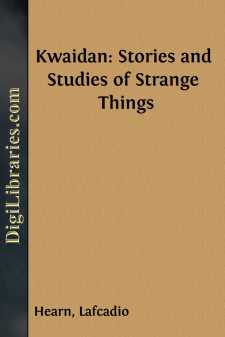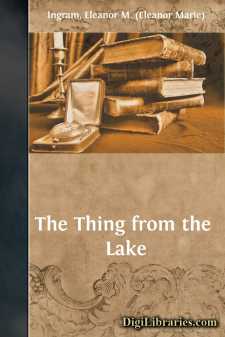Categories
- Antiques & Collectibles 13
- Architecture 36
- Art 48
- Bibles 22
- Biography & Autobiography 813
- Body, Mind & Spirit 141
- Business & Economics 28
- Children's Books 12
- Children's Fiction 9
- Computers 4
- Cooking 94
- Crafts & Hobbies 4
- Drama 346
- Education 46
- Family & Relationships 57
- Fiction 11825
- Games 19
- Gardening 17
- Health & Fitness 34
- History 1377
- House & Home 1
- Humor 147
- Juvenile Fiction 1873
- Juvenile Nonfiction 202
- Language Arts & Disciplines 88
- Law 16
- Literary Collections 686
- Literary Criticism 179
- Mathematics 13
- Medical 41
- Music 40
- Nature 179
- Non-Classifiable 1768
- Performing Arts 7
- Periodicals 1453
- Philosophy 64
- Photography 2
- Poetry 896
- Political Science 203
- Psychology 42
- Reference 154
- Religion 513
- Science 126
- Self-Help 83
- Social Science 81
- Sports & Recreation 34
- Study Aids 3
- Technology & Engineering 59
- Transportation 23
- Travel 463
- True Crime 29
Kwaidan: Stories and Studies of Strange Things
by: Lafcadio Hearn
Categories:
Description:
Excerpt
KWAIDAN
THE STORY OF MIMI-NASHI-HOICHI
More than seven hundred years ago, at Dan-no-ura, in the Straits of Shimonoseki, was fought the last battle of the long contest between the Heike, or Taira clan, and the Genji, or Minamoto clan. There the Heike perished utterly, with their women and children, and their infant emperor likewise—now remembered as Antoku Tenno. And that sea and shore have been haunted for seven hundred years... Elsewhere I told you about the strange crabs found there, called Heike crabs, which have human faces on their backs, and are said to be the spirits of the Heike warriors [1]. But there are many strange things to be seen and heard along that coast. On dark nights thousands of ghostly fires hover about the beach, or flit above the waves,—pale lights which the fishermen call Oni-bi, or demon-fires; and, whenever the winds are up, a sound of great shouting comes from that sea, like a clamor of battle.
In former years the Heike were much more restless than they now are. They would rise about ships passing in the night, and try to sink them; and at all times they would watch for swimmers, to pull them down. It was in order to appease those dead that the Buddhist temple, Amidaji, was built at Akamagaseki [2]. A cemetery also was made close by, near the beach; and within it were set up monuments inscribed with the names of the drowned emperor and of his great vassals; and Buddhist services were regularly performed there, on behalf of the spirits of them. After the temple had been built, and the tombs erected, the Heike gave less trouble than before; but they continued to do queer things at intervals,—proving that they had not found the perfect peace.
Some centuries ago there lived at Akamagaseki a blind man named Hoichi, who was famed for his skill in recitation and in playing upon the biwa [3]. From childhood he had been trained to recite and to play; and while yet a lad he had surpassed his teachers. As a professional biwa-hoshi he became famous chiefly by his recitations of the history of the Heike and the Genji; and it is said that when he sang the song of the battle of Dan-no-ura "even the goblins [kijin] could not refrain from tears."
At the outset of his career, Hoichi was very poor; but he found a good friend to help him. The priest of the Amidaji was fond of poetry and music; and he often invited Hoichi to the temple, to play and recite. Afterwards, being much impressed by the wonderful skill of the lad, the priest proposed that Hoichi should make the temple his home; and this offer was gratefully accepted. Hoichi was given a room in the temple-building; and, in return for food and lodging, he was required only to gratify the priest with a musical performance on certain evenings, when otherwise disengaged.
One summer night the priest was called away, to perform a Buddhist service at the house of a dead parishioner; and he went there with his acolyte, leaving Hoichi alone in the temple. It was a hot night; and the blind man sought to cool himself on the verandah before his sleeping-room....




















